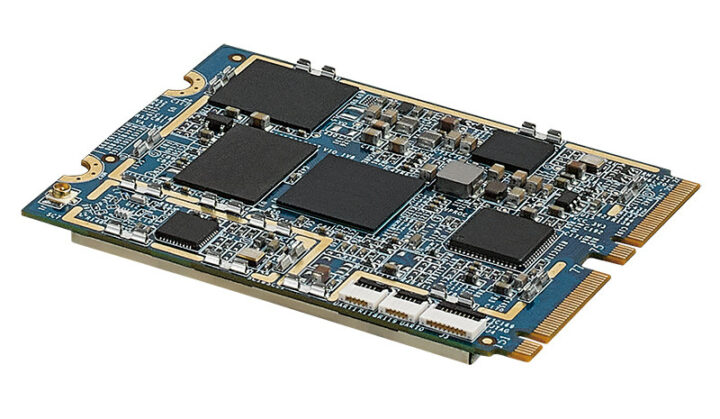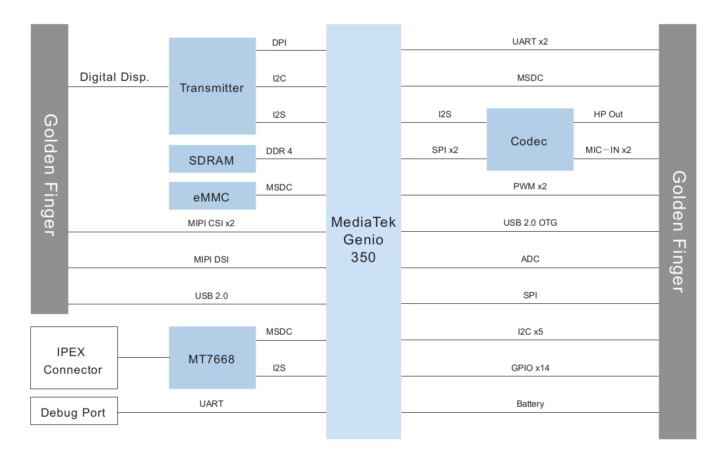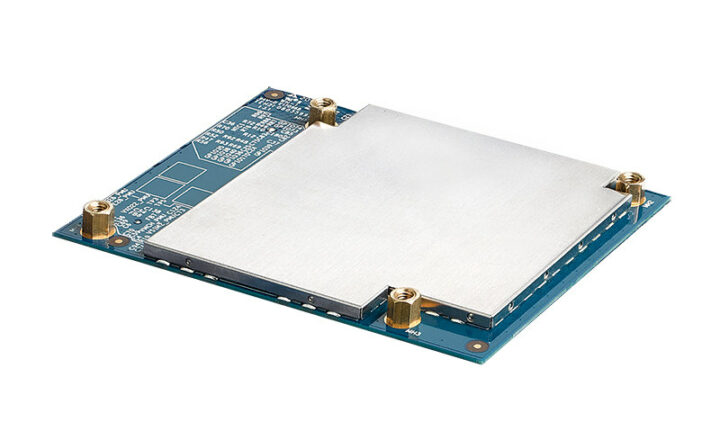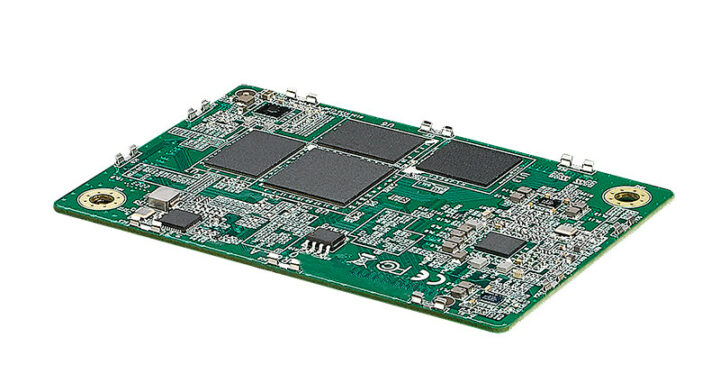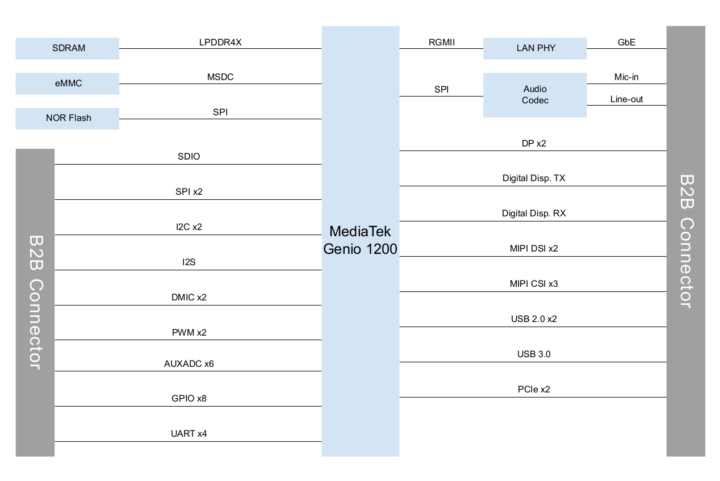Vecow has announced a series of new system-on-modules and development kits based on Mediatek Genio 350, Genio 500, or Genio 1200 processors for AIoT applications ranging from smart security, smart retail, and traffic vision to digital signage.
This follows last week’s news about ADLINK LEC-MTK-I12000 SMARC module and devkit powered by MediaTek Genio 1200 Cortex-A78/A55 AIoT processor, but Vecow also offers solutions based on the entry-level Genio 350 quad-core Cortex-A53 processor, and the mid-range Genio 500 octa-core Cortex-A73/A53 processor.
ESOM-MT-350 Genio 350 system-on-module and devkit
- SoC – MediaTek Genio 350 quad-core Cortex-A53 processor @ 2.0GHz with Mali-G52 GPU with support for OpenGL ES 3.2, OpenCL ES 2.0, and Vulkan 1.1, 1080p60 H.265/H.264 video decoder
- System Memory – 2GB LPDDR4 SDRAM
- Storage – 16GB eMMC flash
- Wireless – MT7668 WiFi 5 and Bluetooth 4.2 module with IPEX connector
- Audio – MediaTek MT6390/6357 audio codec
- Debugging – On-module debug console port
- Host interface – 2x M.2 edge connectors with
- Storage – MSDC (MMC controller to support MMC, SD, and SDIO types of memory cards)
- Display
- “Digital Display” (HDMI) up to up to 1920 x 1080
- 4-lane MIPI DSI up to 1920 x 1080
- Camera – 2x 4-lane MIPI CSI-2
- Audio – 2x Mic-in, 1x Headphone-out
- USB – 1x USB 2.0 Host, 1x USB 2.0 OTG
- Analog – 1x ADC
- Low-speed I/Os – 2x UART (2-wire), 1x SPI, 5x I2C, 14x GPIO, 2x PWM
- Battery gauge
- Power Supply – 4.2V DC-in
- Dimensions – 60 mm x 45 mm
- Temperature Range – Operating & storage: -40°C to 85°C
- Humidity – 5% to 95% Humidity, Non-condensing
- Relative Humidity – 95% at 85°C
- EMC – CE, FCC
The module supports both Android 10 and Linux (Yocto 3.1 built) operating systems, and the company can provide a development kit based on the ESOM-MT-350-CB carrier board for evaluation and early software development.
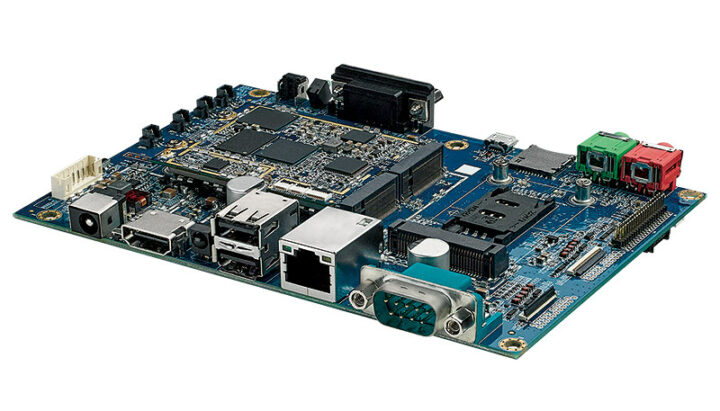 The carrier board comes with HDMI and MIPI DSI display interfaces, two camera interfaces, USB ports and 10/100M Ethernet port via a USB hub), RS232 serial interface, two audio jack for microphone input and line out, as well as a ƒmini PCIe socket with SIM card socket for 4G LTE or Wifi & Bluetooth connectivity.
The carrier board comes with HDMI and MIPI DSI display interfaces, two camera interfaces, USB ports and 10/100M Ethernet port via a USB hub), RS232 serial interface, two audio jack for microphone input and line out, as well as a ƒmini PCIe socket with SIM card socket for 4G LTE or Wifi & Bluetooth connectivity.
ESOM-MT-500 Genio 500 SoM and evaluation kit
- SoC – MediaTek Genio 500 octa-core processor 4x Arm Cortex-A73 @ 2.0GHz, 4x Arm Cortex-A53 @ 2.0GHz, Arm Mali-G72 GPU, 1080p30 H.265/H.264 video decoder, Tensilica Vision P6 Vision DSP
- System Memory – 4GB LPDDR4 SDRAM
- Storage – 16GB eMMC flash
- Host interface – Board-to-board connectors with
- Display
- “Digital Display” (HDMI) up to up to 1920 x 1080
- 4-lane MIPI DSI up to 1920 x 1200
- Camera – 4-lane MIPI CSI-2 up to 5MP
- Audio – 1x Mic-in, 1x Headphone-out
- USB – 1x USB 2.0
- Low-speed I/Os – 2x UART (2-wire), 1x SPI, 5x or 6x I2C (TBC), 12x GPIO
- Display
- Power Supply – 4.2V DC-in
- Dimensions – 70 mm x 55 mm
- Temperature Range – Operating: 0°C to 60°C; storage: -40°C to 85°C
- Humidity – 5% to 95% Humidity, Non-condensing
- Relative Humidity – 95% at 60°C
- EMC – CE, FCC
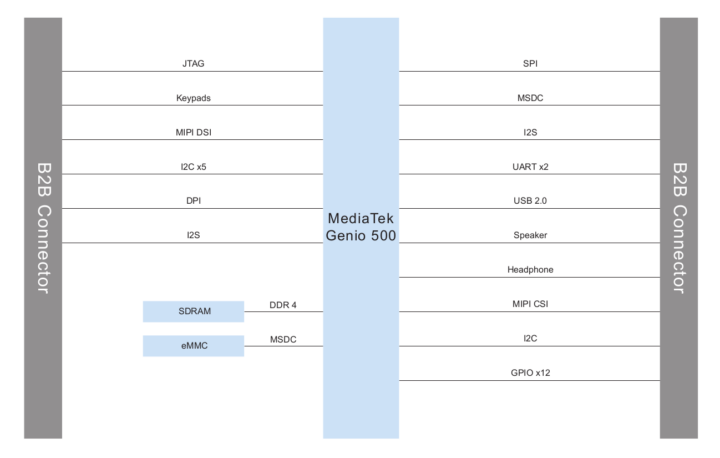
Vecoew provides support for Android 10 and Yocto 2.6 Linux for the module. While the CPU and GPU performance will be much greater than for the Genio 350 module, and memory capacity is double, the ESOM-MT-500 is actually a simpler module without WiFi or audio codec on the module, since there are moved to the carrier board, and fewer interfaces.
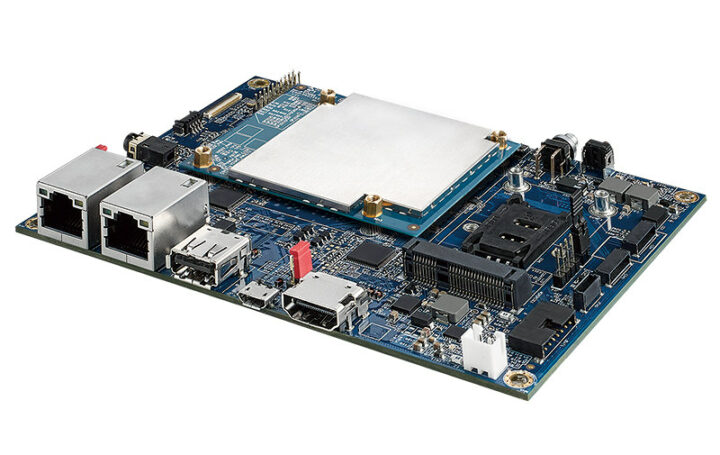
The ESOM-MT-500-EV evaluation kit features a carrier board with two Fast Ethernet and USB ports made available through a USB hub, a WiFi and Bluetooth module, an audio codec, HDMI and MIPI DSI display interfaces, and more. The kit comes with a power supply, a thermal solution, and necessary cables, and there’s also a “Plus” version of the kit that adds a 5 MP camera and a 10.1-inch touchscreen display.
ESOM-MT-1200 Genio 1200 SoM and devkit
- SoC – MediaTek Genio 1200 (MT8395) octa-core processor with 4x Cortex-A78 cores @ 2.2GHz, 4x Cortex-A55 cores @ 2.2GHz with penta-core Arm Mali-G57 GPU @ 880MHz with support for OpenGL ES 3.2/2.0/1.1, Vulkan 1.1/1.0, OpenCL 2.2, 4.8 TOPS NPU, HiFi 4 audio DSP, etc…
- System Memory – 8GB LPDDR4X SDRAM
- Storage – 64GB eMMC flash, 8Mbit SPI NOR flash
- Networking – Unknown GbE transceiver
- Audio – MediaTek MT6365 audio codec
- 4x board-to-board connectors with
- Display
- 1x Digital Display (HDMI) up to 4096 x 2160 @ 60Hz
- 2x DisplayPort up 4096 x 2160 @ 60Hz
- 2x MIPI DSI up to 3840 x 2160
- Dual independent display support
- Camera/video input
- 3x 4-lane MIPI CSI-2 up to 5MP
- 1x Digital Display (HDMI) Rx up to 4096 x 2160 @ 60Hz
- Audio – 1x Mic-in, 1x Headphone-out, 1x I2S Tx/Rx, 2x DMIC
- USB – 1x USB 3.0, 2x USB 2.0
- PCIe – 1x PCIe Gen3 x2
- SDIO – 1x SDIO
- Low-speed I/Os – 1x 4-wire UART, 3x 2-wire UART, 2x SPI, 2x I2C, 2x PWM, 8x GPIO
- Analog – 6x AUXADC
- Display
- Power Supply – 4.2V DC-in
- Dimensions – 82 mm x 55 mm
- Temperature Range – Operating: -20°C to 85°C; storage: -40°C to 85°C
- Humidity – 5% to 95% Humidity, Non-condensing
- Relative Humidity – 95% at 60°C
- EMC – CE, FCC
Software support includes a more recent Android 11 OS, as well as Linux through Yocto 3.1 build system. The MediaTek Genio 1200 is a much more capable and I/Os rich SoC so it’s a step up from the other modules in virtually all aspects. The audio codec is back on the module instead of being on the carrier board, and the Genio 1200 is the only Genio processor so far to have a native (Gigabit) Ethernet interface.
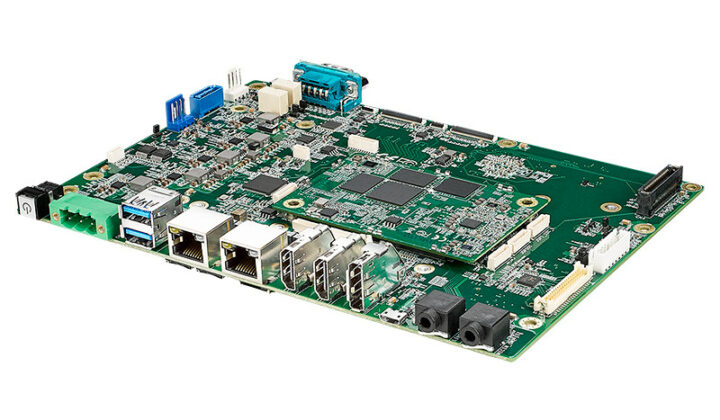 The ESOM-MT-1200-CB 5.25-inch carrier board has a lot to offer with HDMI, DisplayPort, LVDS, and MIPI DSI display interfaces, three 4-lane MIPI CSI camera interfaaces, two Gigabit Ethernet ports including one through Microchip LAN7800 USB 3.0 to Gigabit Ethernet bridge, two USB 3.0 port, two RS232 COM ports, one RS232/RS422/R485 interface, M.2 and mPCIe sockets for expansion, 2x audio jack for Mic-in and Line-Out, and more.
The ESOM-MT-1200-CB 5.25-inch carrier board has a lot to offer with HDMI, DisplayPort, LVDS, and MIPI DSI display interfaces, three 4-lane MIPI CSI camera interfaaces, two Gigabit Ethernet ports including one through Microchip LAN7800 USB 3.0 to Gigabit Ethernet bridge, two USB 3.0 port, two RS232 COM ports, one RS232/RS422/R485 interface, M.2 and mPCIe sockets for expansion, 2x audio jack for Mic-in and Line-Out, and more.
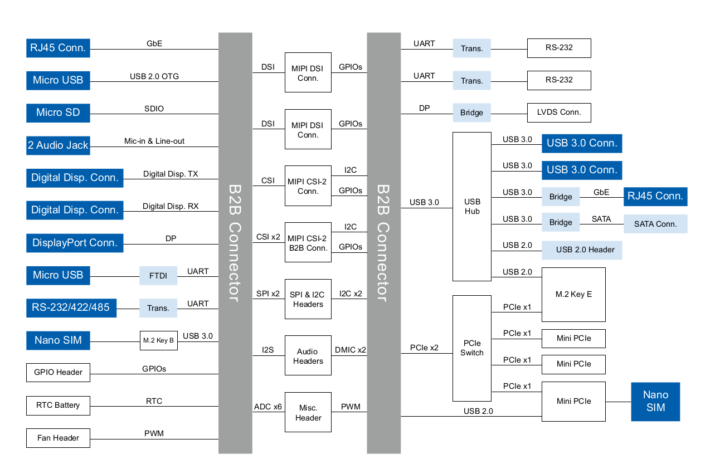
Vecow has not provided details about availability and pricing. More details can be found on the COM/SOM product page and announcement, and the company will be showcasing the solution at Embedded World 2022 which starts today.

Jean-Luc started CNX Software in 2010 as a part-time endeavor, before quitting his job as a software engineering manager, and starting to write daily news, and reviews full time later in 2011.
Support CNX Software! Donate via cryptocurrencies, become a Patron on Patreon, or purchase goods on Amazon or Aliexpress


